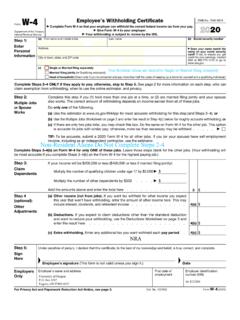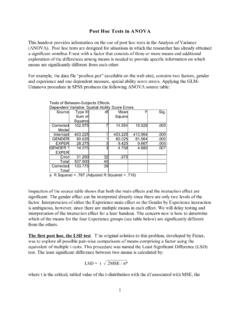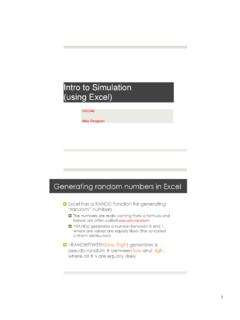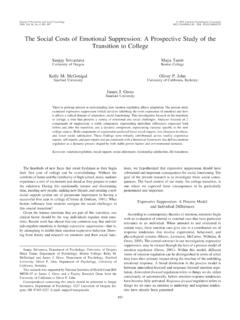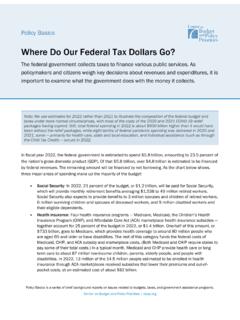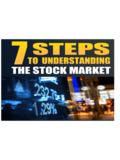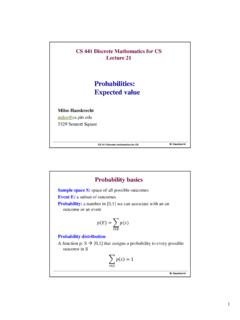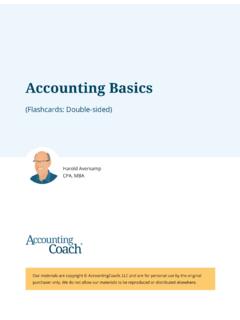Transcription of MARKET AND FEASIBILITY STUDIES - University of Oregon
1 MARKET AND FEASIBILITY STUDIES : A HOW-TO GUIDE by LEE R. NOVAK May 1996 Table of Contents What Is A MARKET And FEASIBILITY Study?..4 Who Uses MARKET And FEASIBILITY STUDIES ?..6 Land planners and Lending institutions and Government Elected Who Performs MARKET And FEASIBILITY STUDIES ?..9 Architectural, engineering and planning Lending institutions and other 10 Government MARKET analysts and other real estate What Are The Types Of MARKET And FEASIBILITY STUDIES ?..11 Back of the Cost-benefit Analysis of economic Analysis of economic Land use Marketability Study of highest and best MARKET Financial FEASIBILITY How Are MARKET And FEASIBILITY Analysis Performed?..15 Project The MARKET The FEASIBILITY What is the best way to present the results?.. 31 What Are Some Common Mistakes In Performing MARKET And FEASIBILITY STUDIES ?
2 33 Consultant Poor Consultant MARKET & FEASIBILITY STUDIES : A How-To Guide Page 2 Introduction During the 1980's, the halcyon years of real estate development, new projects were developed on an epic scale. Millions of square feet of retail, office and residential space were built in the United States, especially in the Sunbelt states of the south. Loans were easy to come by and interest rates were low. Savings and Loans were handing out funds like candy to trick-or-treaters. Despite the boom, much of this development remained vacant or without buyers and had enormous debt burdens. The cycle of bad loans and failed projects was evident by the mid-1980's, but it wasn't until the late 1980's that the Savings and Loan crisis broke. Savings and loan institutions were supposed to be safe places for people to keep their money and to obtain moderate home loans, but the 1982 deregulation had allowed these institutions to fund any type of project.
3 As S & L's crashed, it became evident that a huge bailout would be necessary. The Resolution Trust Corporation was formed for this task. The cost was original predicted to be $50 billion, but has risen to between $500 billion and $1 trillion dollars. The eventual burden on the taxpayers could be $2,000 per capita. What do bad loans and failed banks have to do with MARKET and FEASIBILITY STUDIES ? Everything. One of the main causes for the S & L debacle is bad loans made without accurate information showing whether a project could succeed. During the 1980's loans were made to developers based on past successes. Instead of a critical look at the project by the lender, loans were granted for the ability to put up buildings quickly and cheaply. Banks are more wary now, and they are required to be. A MARKET and FEASIBILITY study will be necessary for almost any development project to obtain funding.
4 Not just a necessity for funding, a MARKET study helps avoid bad projects when used by the development team to design the project and for marketing. Even public projects are requiring more detailed STUDIES for capital projects. Planners often write and review MARKET and FEASIBILITY STUDIES for both public and private projects. This chapter outlines the basics of MARKET and FEASIBILITY STUDIES . We will begin by describing what a MARKET and FEASIBILITY study is and its place in the development process. Next, we will examine who uses these STUDIES , who writes them and what types of MARKET STUDIES exist. Then we will go An Example: The McKenzie Sports Arena MARKET Analysis and Preliminary FEASIBILITY Study In December of 1996, the Community Planning Workshop (CPW) was hired by Broad Base Programs, Inc. to analyze the MARKET for a large scale multiple sports Arena. The facility would be a large scale quasi-public development.
5 In order to obtain MARKET information CPW performed an extensive study. Throughout this report we will trace the path that CPW took in writing the MARKET analysis. Each gray box will outline a different portion of the study and the process. MARKET & FEASIBILITY STUDIES : A How-To Guide Page 3 through the steps in performing a MARKET study. Next, we provide some advice on delivering the results. We conclude with a look at common errors made in the process. What Is A MARKET And FEASIBILITY Study? Most people lump MARKET and FEASIBILITY STUDIES together, but they are two different entities and typically occur at different times in the development process. In general, a MARKET analysis searches for the intersection of demand and supply that will create a MARKET for a product at a given price, and a FEASIBILITY analysis tests whether a certain product will meet certain financial or social goals in the MARKET .
6 As Figure 1 shows, a MARKET analysis is performed early in the process, while a FEASIBILITY analysis is performed after initial design and during design refinements. Figure 1 The Real Estate Development Process Idea inception Not feasible Feasible Idea refinement Not feasible Feasible MARKET analysis Not feasible Feasible Project design Not feasible Feasible FEASIBILITY study Not feasible Feasible Contracts & entitlements Not feasible Feasible Construction MARKET & FEASIBILITY STUDIES : A How-To Guide Page 4 Property management Developers usually have some sense of the MARKET when they first consider a site or development concept. As entrepreneurs, they are constantly following trends, watching other developers and looking for new niches to fill in the MARKET . Based on this knowledge, a developer will identify an opportunity and create a concept for taking advantage of that opportunity.
7 This initial idea will make intuitive sense to the developer, but gut feelings are not a sound basis for investing thousands or even millions of dollars in construction. The developer needs more detailed information about the MARKET before proceeding even to the preliminary design phase. Here is where the MARKET analysis comes in. The MARKET analysis helps the developer answer a series of questions to refine the project concept. For example a residential developer would want to know answers to the following questions: What are the employment trends in the MARKET area? What is the population growth rate in the MARKET area? What is the best configuration and size of units for the proposed development? How many units can the MARKET absorb, at what price and over what length of time? What percent of MARKET demand will the project capture and why? How should units be marketed to the target customers?
8 How much operating revenue or income can this project expect to generate over a certain time? What are the regulatory controls placed on this type of development? What is the communities position on the potential development in the proposed location? (Miles, 11) Other types of developers such as commercial and industrial builders will want to answer similar questions. This information is essential for proceeding with design, fund raising and eventually marketing. The developer will share the information with architects, engineers and landscape architects who will develop a more refined site plan. Architects will use the information to decide on building type and amenities, engineers will use the information to plan for infrastructure and landscape architects will design how the buildings should be placed on the site. The next step is the FEASIBILITY study. Based on the designs, the developer will obtain construction and other project costs.
9 The analyst who performs the FEASIBILITY study will test whether the expected revenues which were generated in the MARKET analysis sufficiently exceed the expected costs. In most cases, the project is required to generate a dollar return commiserate with the amount of risk involved in order to proceed. In certain public projects, a policy decision may be made that the projects contribution to the community is more important than making money. For example, many communities build stadiums using debt financing such as bonds. Cities may not expect MARKET & FEASIBILITY STUDIES : A How-To Guide Page 5 to generate profit on their investment, but hope that spin-offs and residual effects of development will increase the community's general well being. While FEASIBILITY STUDIES should consider other non-monetary risks and opportunities, for most developers and investors the bottom line is delivered in dollars and cents.
10 If the FEASIBILITY study is positive, the project may move forward. The developer will use the study to obtain funding from investors and developers, contracts will be signed with builders, and marketing efforts will start. If the FEASIBILITY study is negative, the developer may decide to abandon the project despite having invested thousands in a study. The developer may also return to the design team and search for ways to make the project profitable. The development team may change the combination of amenities, increase density, obtain better loan rates or even completely switch the type of development. The developer and MARKET analyst will become involved in an information feed-back loop until all the permits are obtained. At this point, it typically becomes too expensive to change the project. It would seem that the MARKET analysis is no longer necessary once construction has begun, but much of the information can be used in marketing the project.
